Filter by
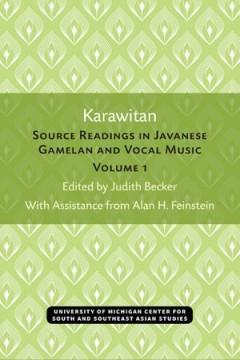
Karawitan, Volume 1: Source Readings in Javanese Gamelan and Vocal Music
The twentieth century has spawned a great interest in Indonesian music, and now books, articles, and manuscripts can be found that expound exclusively about karawitan (the combined vocal and instrumental music of the gamelan). Scholar Judith Becker has culled several key sources on karawitan into three volumes and has translated them for the benefit of the Western student of the gamelan traditi…
- Edition
- -
- ISBN/ISSN
- 9780472901647
- Collation
- -
- Series Title
- -
- Call Number
- 781.6 KAR k
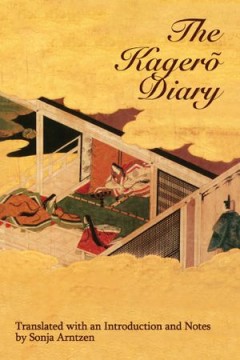
The Kagero Diary: A Woman’s Autobiographical Text from Tenth-Century Japan
Japan is the only country in the world where women writers laid the foundations of classical literature. The Kagero Diary commands our attention as the first extant work of that rich and brilliant tradition. The author, known to posterity as Michitsuna’s Mother, a member of the middle-ranking aristocracy of the Heian period (794–1185), wrote an account of 20 years of her life (from 954–74…
- Edition
- -
- ISBN/ISSN
- 9780472901401
- Collation
- -
- Series Title
- -
- Call Number
- 305.8952 KAG k
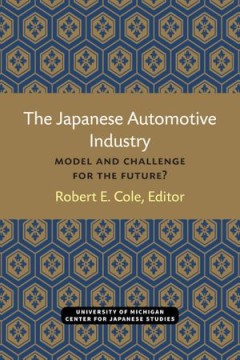
The Japanese Automotive Industry: Model and Challenge for the Future?
As the University of Michigan Center for Japanese Studies reflected on the deteriorating position of the domestic auto industry in the fall of 1980, and the strong competitive threat being posed by the Japanese automakers, we were struck by the extraordinary low quality of the public discussion of these critical issues. The national importance of the issues seemed only matched by the superficia…
- Edition
- -
- ISBN/ISSN
- 9780472902033
- Collation
- -
- Series Title
- -
- Call Number
- 300 JAP j
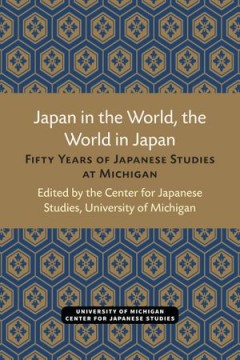
Japan in the World, the World in Japan: Fifty Years of Japanese Studies at Mi…
In fall 1997 the Center for Japanese Studies at The University of Michigan celebrated its fiftieth anniversary. The November symposium featured more than fifty speakers, moderators, and musicians who celebrated the occasion and offered reminiscences on the Center's multifaceted scholarly and professional missions, discussions of the accomplishments of its al-umni/ae, and perspectives on wartime…
- Edition
- -
- ISBN/ISSN
- -
- Collation
- -
- Series Title
- -
- Call Number
- 952 JAP j
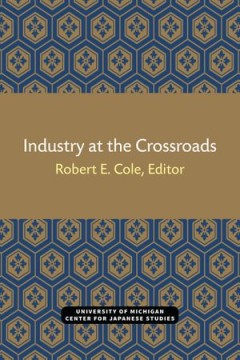
Industry at the Crossroads
International communication as a field of inquiry is, in fact, not very “internationalized.” Rather, it has been taken as a conceptual extension or empirical application of U.S. communication, and much of the world outside the West has been socialized to adopt truncated versions of Pax Americana’s notion of international communication. At stake is the “subject position” of academic an…
- Edition
- -
- ISBN/ISSN
- 9780472902040
- Collation
- -
- Series Title
- -
- Call Number
- 330 IND i
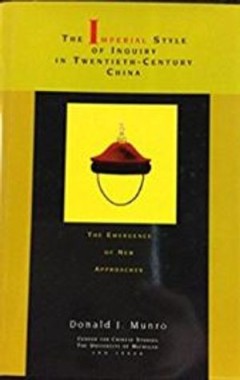
The Imperial Style of Inquiry in Twentieth-Century China: The Emergence of Ne…
How have traditional Chinese ways of thinking affected problem solving in this century? The traditional, imperial style of inquiry is associated with the belief that the universe is a coherent, internally structured unity understandable through the similarly structured human mind. It involves a reliance on antecedent and authoritarian models, coupled with an introspective focus in investigation…
- Edition
- -
- ISBN/ISSN
- 9780472901784
- Collation
- -
- Series Title
- -
- Call Number
- 301.951 MUN i
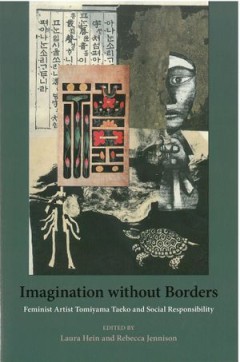
Imagination without Borders: Feminist Artist Tomiyama Taeko and Social Respon…
Tomiyama Taeko, a Japanese visual artist born in 1921, is changing the way World War II is remembered in Japan, Asia, and the world. Her work deals with complicated moral and emotional issues of empire and war responsibility that cannot be summed up in simple slogans, which makes it compelling for more than just its considerable beauty. Japanese today are still grappling with the effects of …
- Edition
- -
- ISBN/ISSN
- 9780472901623
- Collation
- -
- Series Title
- -
- Call Number
- 302.3 IMA i
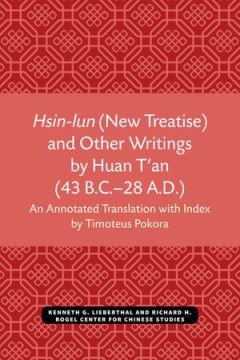
Hsin-lun (New Treatise) and Other Writings by Huan T'an (43 B.C.–28 A.D.)
Better known in his own times than later, Huan T’an (43 BCE–25 CE) was a scholar-official, independent in his thought and unafraid to criticize orthodox currents of his time. A practitioner of the Old Text exegesis of the Classics, he maintained a position on the court during a turbulent time of political crises, uprisings, and civil war, spanning the reigns of four emperors. His princip…
- Edition
- -
- ISBN/ISSN
- 9780472901395
- Collation
- -
- Series Title
- -
- Call Number
- 300 POK h
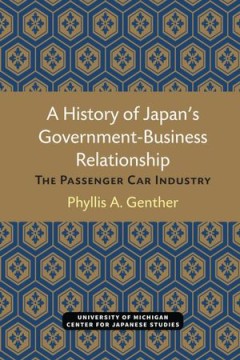
A History of Japan’s Government-Business Relationship: The Passenger Car In…
Despite the economic and political importance of the U.S.-Japan relationship and the extensive attention paid to automotive trade, few American scholars or policy makers are familiar with the history of Japanese government-business relations, either generally or for specific industries such as passenger cars. This book hopefully helps in a small way to fill that gap in our knowledge and, thus, …
- Edition
- -
- ISBN/ISSN
- 9780472902071
- Collation
- -
- Series Title
- -
- Call Number
- 952 GEN h
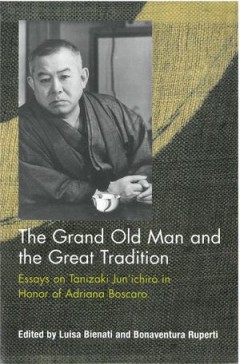
The Grand Old Man and the Great Tradition: Essays on Tanizaki Jun’ichiro in…
In 1995, on the thirtieth anniversary of Tanizaki Jun’ichiro’s death, Adriana Boscaro organized an international conference in Venice that had an unusally lasting effect on the study of this major Japanese novelist. Thanks to Boscaro’s energetic commitment, Venice became a center for Tanizaki studies that produced two volumes of conference proceedings now considered foundational for all s…
- Edition
- -
- ISBN/ISSN
- 9780472901616
- Collation
- -
- Series Title
- -
- Call Number
- 808.84 GRA g
 Computer Science, Information & General Works
Computer Science, Information & General Works  Philosophy & Psychology
Philosophy & Psychology  Religion
Religion  Social Sciences
Social Sciences  Language
Language  Pure Science
Pure Science  Applied Sciences
Applied Sciences  Art & Recreation
Art & Recreation  Literature
Literature  History & Geography
History & Geography